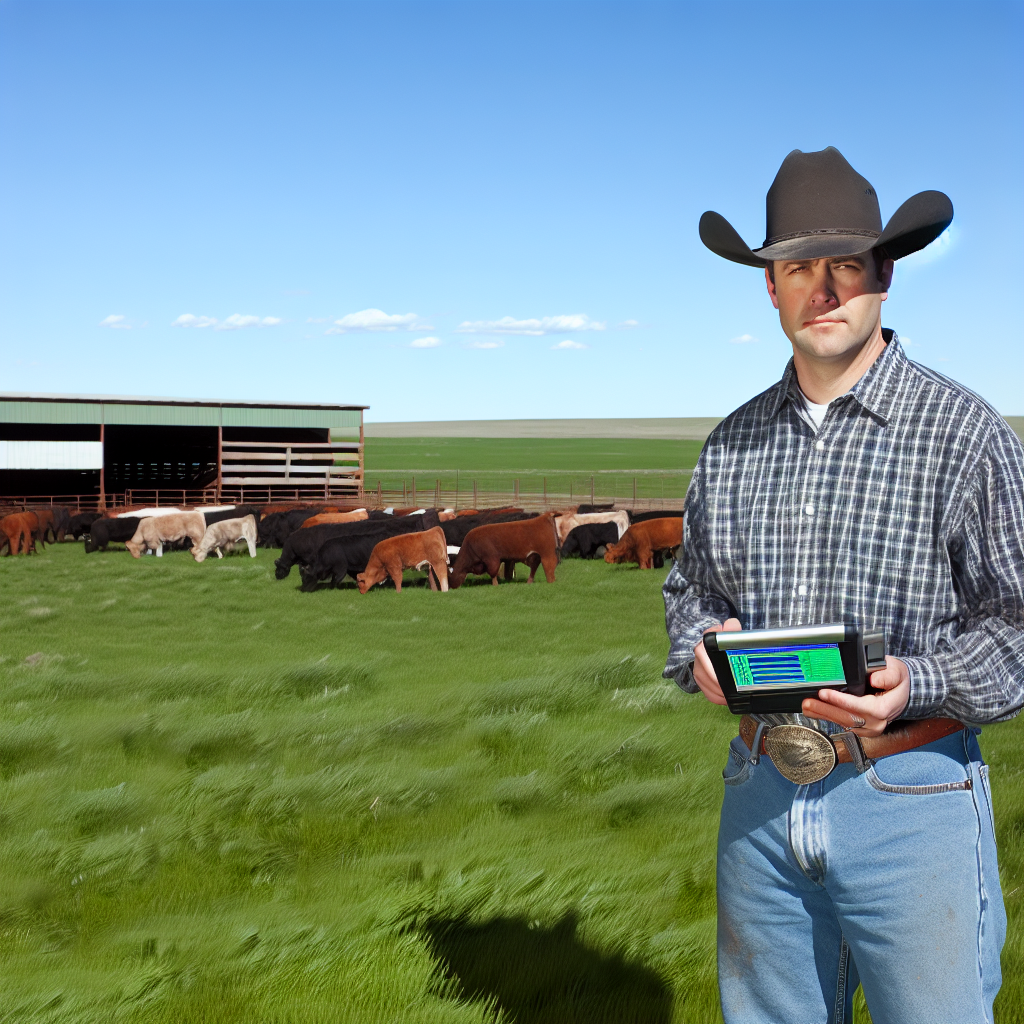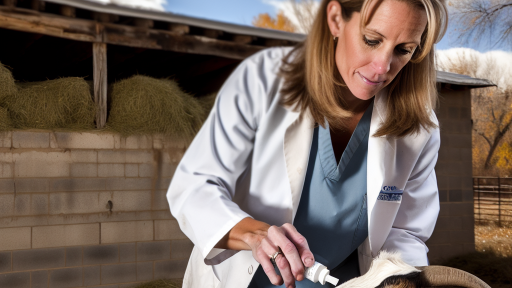Introduction to Genetic Selection Techniques in Livestock Management
Genetic selection techniques play a crucial role in livestock management.
These methods enhance the desired traits in various animal species.
Today, farmers apply innovative technologies to improve quality and efficiency.
Importance of Genetic Selection
Genetic selection is essential for optimizing livestock performance.
It leads to higher yields and better quality products.
Furthermore, it helps in disease resistance among herds.
Common Genetic Selection Techniques
Multiple techniques exist for genetic selection in livestock.
Traditional breeding remains the foundation of these methods.
- Natural selection encourages strongest traits to thrive.
- Artificial selection allows farmers to control breeding outcomes.
- Crossbreeding combines traits from different breeds for improvement.
Advanced Genetic Technologies
Recent advancements have introduced new tools for genetic selection.
Genomic selection utilizes DNA testing for precise breeding decisions.
This technique accelerates the improvement of desirable traits.
Moreover, gene editing holds promise for directly altering genetic material.
Benefits of Genetic Selection
The advantages of implementing genetic selection are numerous.
- Increased profitability through enhanced production rates.
- Improved animal welfare through better health and resistance.
- Sustainable practices that contribute to environmental balance.
Challenges in Genetic Selection
Despite its benefits, genetic selection presents several challenges.
Ethical concerns regarding genetic modification often arise.
Transform Your Agribusiness
Unlock your farm's potential with expert advice tailored to your needs. Get actionable steps that drive real results.
Get StartedAdditionally, there is the potential for reduced genetic diversity.
Farmers must navigate these issues carefully to ensure success.
Importance of Genetic Selection for Enhancing Livestock Production
Enhancing Productivity
Genetic selection improves livestock productivity significantly.
This approach targets specific traits beneficial for production.
For instance, enhanced milk yield in dairy cows demonstrates this impact.
Additionally, faster growth rates in meat-producing animals lead to higher profits.
Consequently, genetic selection plays a critical role in efficiency.
Improving Animal Health
Another vital aspect is improving overall animal health.
Genetic selection helps in reducing the prevalence of hereditary diseases.
Healthy livestock contribute to sustainable farming practices.
These animals have better reproductive success and longevity.
As a result, farmers can maintain a more productive herd.
Adapting to Environmental Changes
Additionally, genetic selection aids in adapting livestock to changing environments.
Selecting for traits like drought resistance enhances survival.
Moreover, animals with better disease resistance thrive in challenging conditions.
Consequently, farms can operate efficiently despite climate fluctuations.
This adaptive capability is crucial for long-term sustainability.
Economic Benefits
Incorporating genetic selection leads to substantial economic benefits.
Higher productivity translates directly into increased revenue for farmers.
Moreover, healthier livestock reduce veterinary costs.
Finally, by improving efficiencies, farms can capitalize on market demands.
Thus, genetic selection is a strategic investment in livestock management.
Overview of Traditional Breeding Methods vs. Genetic Selection
Understanding Traditional Breeding Methods
Traditional breeding methods have shaped livestock management for centuries.
Farmers select animals based on phenotypic traits.
Showcase Your Farming Business
Publish your professional farming services profile on our blog for a one-time fee of $200 and reach a dedicated audience of farmers and agribusiness owners.
Publish Your ProfileThis selection often involves visual assessments, such as size and color.
Additionally, farmers assess behavioral traits like temperament.
However, this approach can be time-consuming and less accurate.
Limitations of Traditional Breeding
One major limitation of traditional breeding is its reliance on chance.
Many desirable traits may not surface in the offspring.
Consequently, it may take multiple generations to achieve desired results.
Moreover, inbreeding can occur, leading to health issues.
This can reduce genetic diversity, ultimately harming livestock populations.
Introduction to Genetic Selection Techniques
Genetic selection techniques offer a more precise approach.
They leverage advancements in genetics to enhance livestock management.
The methods include genomic selection and marker-assisted selection.
Genomic selection examines the entire genome, focusing on favorable traits.
This approach provides data-driven insights for better decision-making.
Advantages of Genetic Selection
Genetic selection presents several advantages over traditional methods.
Firstly, it improves the accuracy of selecting desirable traits.
Secondly, it enhances the efficiency of breeding programs.
Additionally, genetic diversity can be maintained more effectively.
This leads to healthier livestock populations with fewer inherited diseases.
Applications in Livestock Management
Farmers and ranchers use genetic selection techniques widely today.
For instance, cattle producers utilize these methods to improve milk production.
Pork producers focus on traits like growth rate and feed efficiency.
Moreover, poultry farmers enhance egg quality and disease resistance.
Overall, these techniques drive productivity and sustainability in livestock management.
Delve into the Subject: Selecting the Right Sheep for Your Farm
Key Genetic Selection Techniques: A Closer Look
Genomic Selection
Genomic selection uses genetic information to predict breeding values.
This technique improves the accuracy of selection for desired traits.
Moreover, it reduces the time needed to achieve genetic improvements.
Farmers can select animals with superior genetics more effectively.
Marker-Assisted Selection
Marker-assisted selection leverages specific genetic markers linked to traits.
This approach enhances traditional selection methods.
It enables breeders to identify desirable phenotypes at an early age.
Consequently, it accelerates the breeding process significantly.
Traditional Breeding Techniques
Traditional breeding remains fundamental in livestock management.
It involves selecting animals based on observable characteristics.
Breeding pairs are chosen for their performance and progeny traits.
However, this method can be time-consuming and less precise.
Crossbreeding Strategies
Crossbreeding combines different genetic lines to create hybrid vigor.
Hybrids can exhibit superior traits not present in purebreds.
This technique often leads to increased productivity and resilience.
Farmers should evaluate potential benefits and risks associated with crossbreeding.
Showcase Your Farming Business
Publish your professional farming services profile on our blog for a one-time fee of $200 and reach a dedicated audience of farmers and agribusiness owners.
Publish Your ProfileArtificial Insemination
Artificial insemination allows for selective breeding without natural mating.
This method increases the genetic pool available to farmers.
It also facilitates the use of superior sires from different locations.
Overall, this technique enhances genetic diversity in livestock populations.
Controlled Breeding Programs
Controlled breeding programs aim to systematically breed livestock for specific goals.
These programs often focus on improving health and productivity traits.
Through excellent record-keeping and data analysis, outcomes are predictable.
Farmers can achieve desirable results by following structured breeding plans.
See Related Content: Best Practices for Breeding Fish in Aquaculture Systems
Tools and Technologies for Genetic Selection in Livestock
Overview of Genetic Selection Tools
Genetic selection tools significantly enhance livestock management.
These tools help improve desirable traits in animals.
Producers increasingly rely on genetic data for decision-making.
Traditional Breeding Methods
Traditional breeding remains a cornerstone of livestock management.
This method involves selecting animals based on observable traits.
Farmers often employ pedigree records for informed choices.
Moreover, inbreeding can preserve desirable genetic characteristics.
DNA Testing Techniques
DNA testing provides insights into animal genetics.
This technology offers precise data on genetic markers.
Producers utilize DNA tests to identify carrier animals for traits.
Such knowledge aids in preventing genetic disorders.
Genomic Selection
Genomic selection is revolutionizing livestock breeding.
This approach uses whole-genome data to select animals.
It enhances accuracy in predicting breeding values.
Consequently, farmers can make more informed genetic decisions.
Software Applications in Genetic Selection
Various software applications streamline genetic selection processes.
These tools facilitate data management and analysis.
Producers benefit from user-friendly interfaces for genetic tracking.
Additionally, cloud-based solutions enhance collaboration among breeders.
Data Collection Technologies
Data collection technologies are vital for modern livestock management.
Wearable devices capture real-time health and performance data.
Producers can monitor behavioral patterns and biological metrics.
Such information helps fine-tune breeding strategies.
Artificial Intelligence and Machine Learning
Artificial intelligence is emerging in livestock genetic selection.
Machine learning algorithms analyze complex genetic data.
This technology predicts outcomes based on historical patterns.
Consequently, it optimizes breeding plans for better results.
Future Trends in Genetic Selection
The future of livestock genetic selection looks promising.
Advancements in CRISPR technology allow precise genome editing.
Such innovations could enhance resistance to diseases.
Furthermore, sustainable breeding practices are gaining traction.
Showcase Your Farming Business
Publish your professional farming services profile on our blog for a one-time fee of $200 and reach a dedicated audience of farmers and agribusiness owners.
Publish Your ProfileTechnology continually shapes the landscape of livestock management.
Uncover the Details: Common Challenges in Exotic Livestock Management

Case Studies: Successful Implementation of Genetic Selection in Farms
Case Study One: Maplewood Farms
Maplewood Farms implemented genetic selection to improve their cattle breed.
They focused on traits like milk production and disease resistance.
The farm recorded a 20% increase in milk yield within two years.
Furthermore, the incidence of diseases dropped significantly.
Farm manager Sarah Thompson emphasizes genetic testing’s importance.
She noted the efficiency it brought to their breeding program.
Case Study Two: Green Valley Pork Producers
Green Valley Pork Producers adopted genetic selection for their hogs.
They specifically targeted feed efficiency and growth rates.
This technique helped them reduce feed costs by 15%.
Moreover, they achieved a faster time to market, benefiting their profits.
Owner David Lee shared his optimistic view on future expansions.
He believes this approach significantly enhances their sustainability.
Case Study Three: Sunny Acres Poultry
Sunny Acres Poultry focused on genetic selection in their chicken breeds.
They prioritized egg production and disease resistance traits.
As a result, egg production increased by 25% over three years.
Additionally, overall flock health saw considerable improvements.
Head farmer Jessica Martinez believes in using data for breeding decisions.
This strategy aligns with their mission of sustainable poultry farming.
Case Study Four: Harvest Ridge Sheep Farm
Harvest Ridge Sheep Farm utilized genetic selection for their flock.
They aspired to enhance wool quality and lambing rates.
This approach led to an impressive increase in wool yield.
Furthermore, lambing rates improved thanks to targeted genetic traits.
Farm owner Manuel Sanchez advocates for the use of technology.
He stresses its role in making informed breeding decisions.
Gain More Insights: Energy-Efficient Solutions for Sustainable Aquaculture
Challenges and Limitations of Genetic Selection Techniques
Complexity of Genetic Traits
Genetic traits in livestock can be complex and multifactorial.
This complexity makes it difficult to isolate desirable traits effectively.
Moreover, interactions between genes can further complicate selection efforts.
As a result, breeders may face challenges in predicting outcomes accurately.
Limited Genetic Diversity
Genetic selection often leads to a reduction in genetic diversity.
This reduction can increase vulnerability to diseases and environmental changes.
Breeding from a limited gene pool may produce uniformity in traits.
Consequently, this uniformity can hinder adaptability in livestock populations.
Ethical Considerations
Ethics play a significant role in genetic selection techniques.
Some practices may raise concerns regarding animal welfare.
For instance, certain selection methods can lead to health problems.
Breeders must consider the long-term implications of their choices.
Economic Constraints
Genetic selection can be costly and resource-intensive.
Showcase Your Farming Business
Publish your professional farming services profile on our blog for a one-time fee of $200 and reach a dedicated audience of farmers and agribusiness owners.
Publish Your ProfileMany small-scale farmers may lack the necessary funding.
Additionally, advanced technologies can be financially prohibitive.
This can limit access to effective breeding techniques in some regions.
Dependency on Technology
Many genetic selection methods rely heavily on technology.
This dependency can create challenges for farmers without resources.
Moreover, rapid advancements may require ongoing education and training.
Without proper training, the effectiveness of these techniques may diminish.
Regulatory Challenges
Regulations surrounding genetic modifications can be stringent.
Compliance with these regulations can be time-consuming and complex.
Additionally, differing regulations across regions can pose challenges.
Farmers may find it difficult to navigate these regulatory environments.
Future Trends in Genetic Selection for Sustainable Livestock Management
Advancements in Genetic Testing
Genetic testing is becoming more accessible for farmers.
Technological advancements enable rapid testing of livestock DNA.
This allows farmers to identify desirable traits quickly.
Moreover, genome sequencing provides deep insights into genetics.
This data enhances decision-making in breeding programs.
Integration of Artificial Intelligence
Artificial intelligence is revolutionizing livestock management.
AI tools analyze genetic data to predict outcomes effectively.
Combining AI with genetic selection optimizes breeding strategies.
This integration streamlines the identification of high-performing animals.
Consequently, farmers can make informed breeding choices.
Focus on Environmental Sustainability
Genetic selection increasingly prioritizes environmental sustainability.
Farmers seek breeds that require fewer resources.
These breeds are more resilient to climate change effects.
Moreover, sustainable genetics support ethical farming practices.
This trend aligns with global efforts towards sustainable agriculture.
Emphasis on Animal Welfare
Animal welfare is gaining attention in genetic selection processes.
Breeding programs now consider traits that enhance well-being.
Traits such as temperament and social behavior become crucial.
Improving welfare leads to healthier livestock populations.
Ultimately, this trend develops more humane farming practices.
Use of Gene Editing Technologies
Gene editing is a powerful tool in livestock genetic selection.
Techniques like CRISPR enable precise alterations in DNA.
These improvements can enhance productivity and disease resistance.
Furthermore, gene editing helps create livestock that thrives in diverse environments.
These capabilities offer solutions to critical farming challenges.
Additional Resources
Livestock and climate change: impact of livestock on climate and …
Genomic Analysis, Progress and Future Perspectives in Dairy Cattle …




